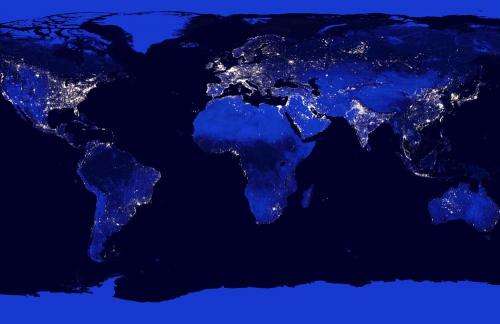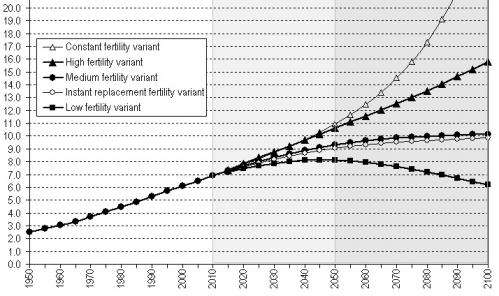A model predicts that the world's populations will stop growing in 2050

Global population data spanning the years from 1900 to 2010 have enabled a research team from the Autonomous University of Madrid to predict that the number of people on Earth will stabilise around the middle of the century. The results, obtained with a model used by physicists, coincide with the UN's downward forecasts.
According to United Nations' estimates, the world population in 2100 will be within a range between 15.8 billion people according to the highest estimates –high fertility variant– and 6.2 billion according to the lowest –low fertility variant–, a figure that stands below the current 7 billion.
A mathematical model developed by a team from the Autonomous University of Madrid (UAM) and the CEU-San Pablo University, both from Spain, seems to confirm the lower estimate, in addition to a standstill and even a slight drop in the number of people on Earth by the mid-21st century.
The population prospects between 1950 and 2100 provided by the UN were used to conduct the study, published in the journal 'Simulation'. Mathematical equations which are used in scientific fields, such as condensed matter physics, were then applied to this data.
"This is a model that describes the evolution of a two-level system in which there is a probability of passing from one level to another," as explained to SINC by Félix F. Muñoz, UAM researcher and co-author of the project.
The team considered the Earth as a closed and finite system where the migration of people within the system has no impact and where the fundamental principle of the conservation of mass –biomass in this case– and energy is fulfilled.
"Within this general principle, the variables that limit the upper and lower zone of the system's two levels are the birth and mortality rates," Muñoz pointed out and recalled the change that occurred in the ratio between the two variables throughout the last century.

"We started with a general situation where both the birth rate and mortality rate were high, with slow growth favouring the former," he added, "but the mortality rate fell sharply in the second half of the 20th century as a result of advances in healthcare and increased life expectancy and it seemed that the population would grow a lot.
However, the past three decades have also seen a steep drop-off in the number of children being born worldwide."
The model's S-shaped sigmoid curve reflects this situation with an inflection point in the mid-1980s when the speed at which the population is growing starts to slow down until it stabilises around 2050.
The data also reflect the downward trend in the UN's series of prospects. "Overpopulation was a spectre in the 1960s and 70s but historically the UN's low fertility variant forecasts have been fulfilled," Muñoz highlighted.
As recently as 1992 it was predicted that there would be 7.17 billion people on Earth by 2010 instead of the actual 6.8 billion. In fact, the fertility rate has fallen by more than 40% since 1950.
"This work is another aspect to be taken into consideration in the debate, although we do not deal with the significant economic, demographic and political consequences that the stabilisation and ageing of the world population could entail," the researcher concluded.
More information: Julio A Gonzalo, Félix-Fernando Muñoz, David J Santos. "Using a rate equations approach to model World population trends". Simulation: Transactions of the Society for Modeling and Simulation International 89: 192-198, February 2013.

















